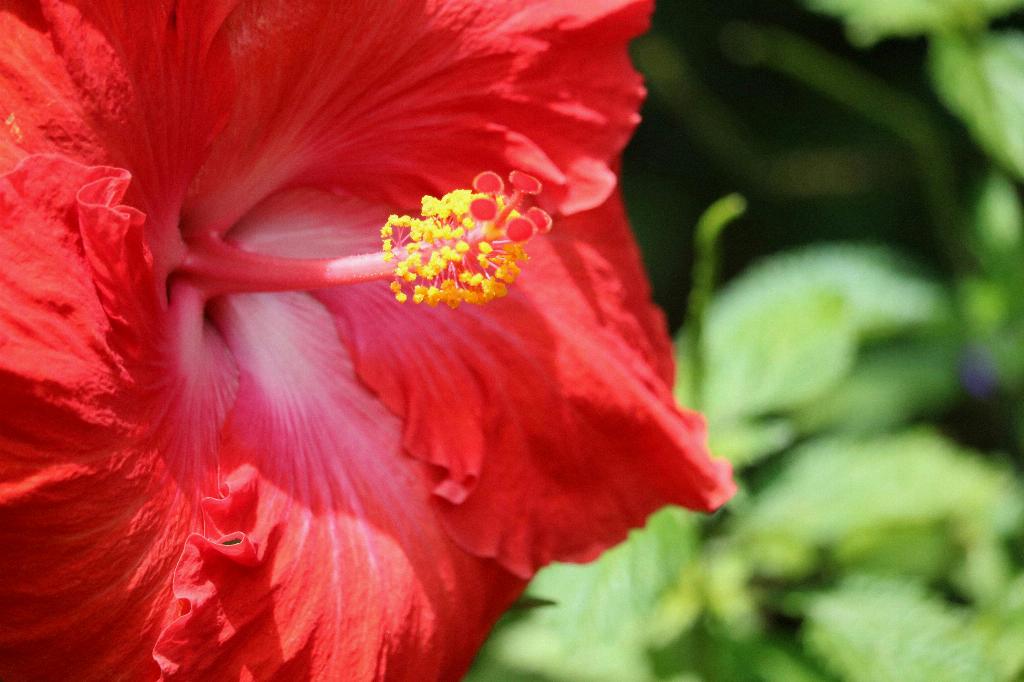When delving into the captivating world of hibiscus plants, one cannot help but marvel at the intricate relationship they share with bees. The vibrant and alluring trumpet-shaped flowers of the hibiscus plant, adorned with multiple delicate petals in a spectrum of hues, serve as beacons for various pollinators, including the beloved bees. These blossoms act as irresistible invitations, drawing bees and other pollinating creatures towards them with the promise of sweet nectar and the potential for a mutualistic exchange of services.
The Allure of Hibiscus Flowers
The expansive array of colors exhibited by hibiscus flowers, ranging from luminous whites and pinks to fiery oranges, rich reds, sunny yellows, regal purples, and captivating multi-hued patterns, play a crucial role in attracting bees. Bees are naturally drawn to vibrant and colorful flowers, as these visual cues signal the presence of nectar and pollen, essential resources that sustain bee populations and support their vital role in the ecosystem.
Unveiling the Nectar-Rich Rewards
One of the primary reasons why hibiscus flowers hold such a profound appeal for bees is the abundant reserves of nectar they offer. The trumpet-shaped design of the hibiscus bloom provides easy access for bees to delve deep into the flower and access the coveted nectar hidden within. As bees forage for nectar to fuel their energy-intensive activities, such as flying and maintaining their hives, the nectar-rich hibiscus flowers present an enticing and rewarding food source.
The Role of Scent in Bee Attraction
In addition to their visual allure and nectar offerings, hibiscus flowers also emit subtle yet enticing fragrances that further enhance their attractiveness to bees. The delicate scents released by hibiscus blooms act as olfactory beacons, guiding bees towards the flowers and aiding them in locating these botanical treasures amidst the vast expanse of the natural landscape. The combination of visual, olfactory, and gustatory stimuli makes hibiscus flowers highly appealing to bees on multiple sensory levels.
A Closer Look at Bee Foraging Behavior
When bees encounter a hibiscus flower that piques their interest, their foraging instincts kick into high gear. Bees are adept at assessing the quality and quantity of nectar available in a flower, using sensory cues to determine the most rewarding floral resources. By visiting hibiscus blooms, bees engage in a delicate dance of mutual benefit, extracting nectar while inadvertently transferring pollen from one flower to another, facilitating cross-pollination and the continuation of plant reproduction.
Creating a Bee-Friendly Environment with Hibiscus
For gardeners and nature enthusiasts seeking to attract bees and support pollinator populations, incorporating hibiscus plants into the landscape can serve as a fruitful endeavor. By cultivating hibiscus flowers in gardens, yards, and outdoor spaces, individuals can provide bees with a reliable and accessible source of nectar, helping to sustain bee populations and contribute to the overall health of the ecosystem. The presence of hibiscus plants can transform a garden into a vibrant haven for bees, pollinators, and other wildlife.
Enhancing Biodiversity Through Bee-Hibiscus Interactions
The interactions between bees and hibiscus flowers not only benefit individual organisms but also play a significant role in enhancing biodiversity and ecosystem resilience. By facilitating pollination and seed dispersal, bees contribute to the genetic diversity and evolutionary adaptability of plant species, ensuring their continued survival and adaptation to changing environmental conditions. The mutualistic relationship between bees and hibiscus plants exemplifies the interconnectedness of species within the natural world.
Supporting Pollinator Health and Conservation Efforts
As global concerns about bee population decline and pollinator health intensify, the significance of maintaining bee-friendly habitats and promoting pollinator conservation efforts becomes increasingly apparent. By cultivating bee-attractant plants such as hibiscus and creating pollinator-friendly environments, individuals can play a crucial role in supporting bee health, enhancing biodiversity, and safeguarding the ecological balance of diverse ecosystems. The simple act of planting hibiscus flowers can contribute to broader conservation initiatives and promote the well-being of bees and other pollinators.
Celebrating the Beauty and Utility of Hibiscus Flowers
While the aesthetic appeal of hibiscus flowers is undoubtedly captivating, their ecological utility and role in sustaining pollinator populations add another layer of significance to these botanical wonders. As bees flutter among the vibrant petals of hibiscus blooms, collecting nectar and transferring pollen, they embody the intricate web of relationships that underpins the natural world. Hibiscus flowers stand as testaments to the beauty of nature and the vital ecological services provided by pollinators such as bees.

Conclusion: The Irresistible Attraction of Hibiscus for Bees
In conclusion, the enchanting allure of hibiscus flowers for bees lies in a harmonious convergence of visual, olfactory, and gustatory stimuli that beckon these essential pollinators towards a plentiful source of nectar. Through their intricate floral designs, rich nectar reserves, and subtle fragrances, hibiscus flowers serve as beacons of biodiversity, fostering mutualistic interactions that benefit both plants and pollinators. By embracing the beauty and utility of hibiscus plants, we celebrate the enduring bond between bees and flowers, honoring the vital role that these industrious insects play in sustaining the intricate tapestry of life on our planet.
